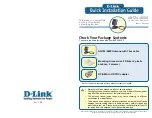
54
Section 4
Cell Phone
Reference
Code Function When To Use
*
#
Pauses Dialing for
Insert where dialing must
5 seconds.
pause for recorded
messages or switching
functions before resuming.
Stops dialing to wait for
Insert when dialing time
SEND
keystroke.
delays are unpredictable.
DTMF dialing string prefix
Place at beginning of a dial
string you want to be sent as
DTMF tones.
Stops to display PhoneBk
Insert when you want to call
and links the Highlighted
a number listed in your
number as the
SEND
key
PhoneBk using a Calling
is pressed.
Card, etc. for a prefix.
Transmits your GPS
Inserted after a dial string
Position.
to another NavTalk unit.
The code for your Calling
Automatically enters your
Card PIN as entered in
PIN when making a call.
Phone Setup Directory.
Queries another unit
Insert at the end of a dialing
for its GPS position.
string to another unit for position
reporting.
Star and Pound Keys.
Used for standard DTMF tones
P
S
D
L
T
C
Q
4. Use the
“C”
code to recall your Calling Card PIN
from its stored and secured location on the Setup
Menu Phone Directory sub-menu.
Example:
Enter
your access number to your carrier, wait for tone,
enter
0
, area code, a 7 digit phone number, wait for
tone, enter a
C
code for your calling card
(18778000P09137226578PC).
5. Use the
“S”
code to stop dialing and pause until
you determine when to continue dialing.
Example:
You dial to an automated phone service that
provides you with voice prompts that you want to
listen to before continuing to dial. (5666789S)
6. Use the
“T”
code to transmit your GPS position
using DTMF tones.
Example:
19137223344T
7. Use the
“Q”
code to query another NavTalk or
NavTalk Pilot for its GPS position. The units will
automatically communicate and transfer the GPS
position.
Example:
18164327890Q
8. Use both
#
and
*
for typical DTMF tones in a string.
Example:
19134569000 P *6674566P435#
















































